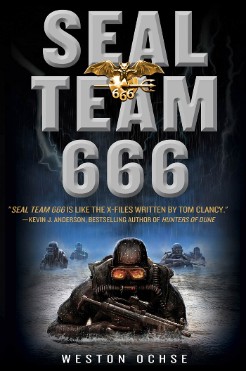Early Morning. Pakistan. May 2, 2011
Don't try this at home was stenciled on the side of the first of the two Blackhawk helicopters assigned to the 160th Special Operations Aviation Regiment, aka Night Stalkers. They were en route from Jalalabad Air Base in Afghanistan to the sleepy residential section of Abbottabad, Pakistan, where a million-dollar compound rested a mere eight hundred meters from Kakul military academy, one of Pakistan's premiere army officer training schools.
SEAL Team 666 rode in the first helicopter. Comprising only five men and a dog, they were different in form and function from all other special-operations units. They wore black camouflage fatigues with dark gray Rhodesian combat vests. On their heads were Protec skate helmets modified for multiband inter/intra team radio (MBITR) headsets and microphones. Atop each helmet was a mount that held a pair of night-vision goggles (NVG). All but one of the SEALs wore gray ballistic face masks. Designed to protect the wearer from 9mm and shotgun hits, the masks produced a likeness similar to a hockey goalie's.
On board the second helicopter, eleven members of SEAL Team 6 were ready to provide backup if necessary. Dressed similarly to the SEAL Team in the first helicopter, none of them wore face masks and they did not have a dog.
"Five minutes," the pilot announced over the radio system. The crew chief and his gunner prepared the doors and checked the M60 machine guns they could employ if necessary.
SEAL Team 666 heard the announcement through the MBITR and performed a last-minute weapons check. All five SEALs carried SIG Sauer 9mm automatic pistols. In addition to the 9s, two SEALs carried Heckler & Koch (HK) MP5s, two SEALs carried M4 Super 90 semiautomatic 12-gauge shotguns, and the fifth SEAL carried a Stoner SR-25 sniper rifle.
The dog was a Belgian Malinois and lay panting at the feet of the sniper, her mouth open in what could be considered the canine equivalent of an anticipatory grin.
